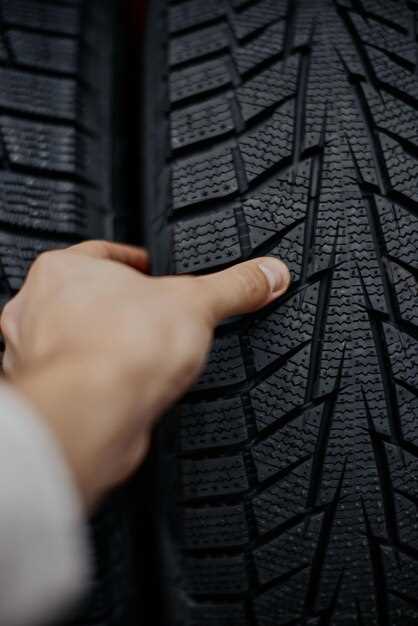
How to choose the right tires for winter driving

When winter arrives, the importance of choosing the right tires cannot be overstated. The cold temperatures, snow, and ice significantly affect vehicle performance, making it crucial to equip your car with tires designed specifically for winter conditions. The wrong choice can lead to compromised safety and handling, putting both the driver and passengers at risk.
Winter tires are engineered to provide superior traction on snow-covered and icy roads. Unlike all-season or summer tires, they are made from a softer rubber compound that remains flexible in low temperatures. This flexibility enhances grip, ensuring that your vehicle maintains contact with the road, which is essential for effective braking and acceleration.
Additionally, the tread design of winter tires features deeper grooves and more biting edges, which help to channel snow and slush away from the tire, improving overall performance. Understanding these characteristics is vital for selecting the best tires that will not only enhance your driving experience but also ensure your safety during the harshest winter months.
Understanding Winter Tire Tread Patterns for Improved Grip

Choosing the right winter tires is essential for enhancing grip and ensuring safety in harsh conditions. Winter tire tread patterns are specifically designed to optimize traction on snow and ice, featuring unique features that set them apart from standard tires.
One of the primary characteristics of winter tire tread patterns is the presence of deeper grooves, known as sipes, which increase the surface area in contact with the road. These small channels help to channel snow and slush away from the tire, preventing hydroplaning and enhancing grip. Additionally, sipes improve the tire’s ability to conform to uneven icy surfaces, providing a better bite.
Another key aspect of winter tire tread patterns is the use of larger, wider tread blocks. These blocks are strategically placed to improve stability and reduce the chance of slipping. The arrangement of these blocks is designed to provide optimal performance even when driving through thick snow, allowing for effective handling and control.
Moreover, many winter tires feature a more flexible rubber compound compared to regular tires. This flexibility allows the tire to maintain its grip even in freezing temperatures, as the rubber stays pliable. When selecting winter tires, it is crucial to consider both the tread pattern and the rubber composition to ensure maximum performance in winter conditions.
In conclusion, understanding winter tire tread patterns is vital for achieving superior grip on icy and snow-covered roads. By recognizing how tread designs improve traction and control, drivers can make informed decisions to enhance their winter driving experience.
Evaluating Tire Rubber Composition for Cold Weather Performance

The rubber composition of winter tires plays a critical role in their performance under cold weather conditions. Unlike summer tires, which are often made from harder compounds that provide optimal grip in warmer temperatures, winter tires utilize softer rubber mixtures. This softness allows for greater flexibility, enabling the tire to conform to the road surface, which enhances traction on icy or snowy terrains.
One key aspect to consider is the presence of silica in the rubber formulation. Silica enhances wet grip and reduces rolling resistance, which can significantly improve performance in cold conditions. Additionally, the tire’s tread pattern works in conjunction with the rubber composition to evacuate water and slush, further enhancing grip. The interplay between the rubber’s elasticity and the design of the tread is crucial for effective snow and ice handling.
Furthermore, the tire’s temperature range is essential. Winter tires are engineered to remain pliable in temperatures as low as -40 degrees Fahrenheit, unlike all-season or summer tires, which can stiffen and lose grip. Choosing tires specifically designed for winter use ensures that the vehicle maintains optimal traction and handling even in the harshest conditions.
In conclusion, evaluating the rubber composition of winter tires is vital for ensuring reliable performance in cold weather. A focus on softer compounds, the inclusion of silica, and an appropriate tread design all contribute to effective grip and enhanced safety in winter driving scenarios.
Comparing Studded vs. Non-Studded Tires for Different Winter Conditions
When it comes to winter driving, choosing the right tires is crucial for safety and performance. The two primary options are studded and non-studded tires, each with distinct advantages and drawbacks depending on the conditions.
Studded tires are designed with metal studs embedded in the tread, providing superior grip on icy surfaces. These tires excel particularly in areas where road conditions are consistently icy, such as mountainous regions or places that frequently experience freezing rain. The studs dig into the ice, offering enhanced traction during acceleration, braking, and cornering, which is essential for maintaining control in extreme conditions.
However, studded tires can be less effective on dry or wet pavement. The aggressive tread pattern and hard materials can lead to increased wear and decreased performance when not on icy terrain. Additionally, in many jurisdictions, there are restrictions on the use of studded tires due to potential road damage.
On the other hand, non-studded tires feature a specialized rubber compound and unique tread designs that enhance grip without the use of metal studs. These tires are particularly effective in snowy conditions, where they can channel snow and slush away from the contact patch, providing better handling and stability. Non-studded options are often quieter and provide a more comfortable ride on clear roads.
While their performance on ice may not match that of studded tires, advancements in tire technology have significantly improved the grip of non-studded options. They are often recommended for regions with fluctuating winter weather, where road conditions can change rapidly from icy to wet or dry.
Ultimately, the decision between studded and non-studded tires should be based on specific driving conditions. For consistent ice, studded tires are the better choice for unparalleled grip. In contrast, for mixed winter conditions, non-studded tires may provide the versatility needed for day-to-day driving, balancing performance across a variety of surfaces.